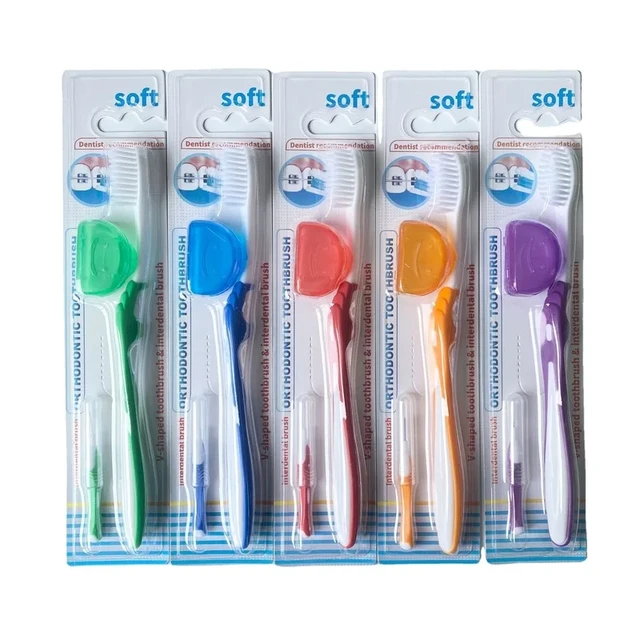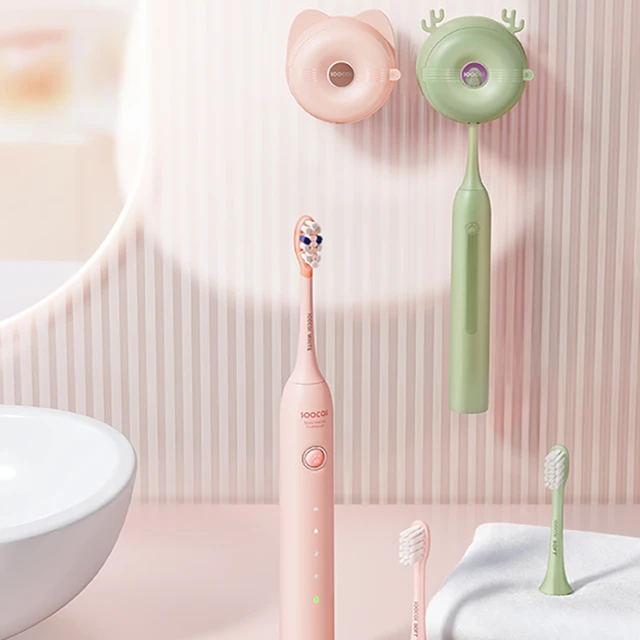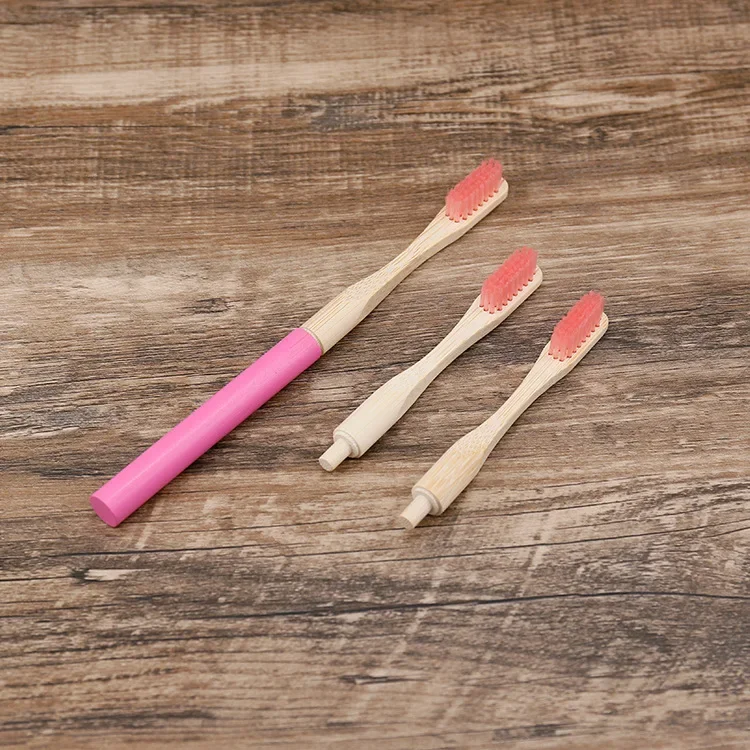Understanding how often do you change your toothbrush
Maintaining oral hygiene involves more than just daily brushing. Knowing when to replace your toothbrush is key. Over time, bristles deteriorate and cleaning efficiency drops. This makes frequent assessment and replacement of your toothbrush crucial.

The American Dental Association’s Recommendation on Replacement
The American Dental Association (ADA) sets a standard for toothbrush replacement. They advise a new toothbrush every three months. At this point, bristles often start breaking down. This impairs their ability to clean teeth properly. Stick to this timeframe to ensure your teeth get the best care.
Identifying Signals of Toothbrush Wear Out
Identifying a worn-out toothbrush is simple. Frayed and bent bristles are clear signs. These warn that your toothbrush is due for replacement. Discoloration and flattening of bristles also indicate it’s time for a new one. Regular checks keep your oral hygiene routine effective.
Risks Associated with Overused Toothbrushes
Continuing to use a toothbrush beyond its intended lifespan can lead to oral health risks. An overused toothbrush not only becomes less effective at cleaning your teeth but can also become a breeding ground for bacteria. Understanding these risks helps in maintaining optimal dental hygiene.
The Ineffectiveness of Frayed Bristles
Frayed bristles can’t clean teeth well. They miss plaque and debris, leaving your mouth unclean. It’s vital to check your toothbrush often. When bristles look worn out, it’s time for a new one. Always aim for efficient cleaning.
Bacterial Accumulation in Toothbrush Bristles
Brush bristles can harbor harmful bacteria. If you use a toothbrush too long, germs multiply. This can lead to oral infections or dental issues. Change your toothbrush regularly to keep your mouth healthy and reduce the risk of bacterial buildup.
Maintaining Your Toothbrush
Caring for your toothbrush is crucial for oral health. Here’s how to keep it in top shape.
Proper Rinsing and Drying Techniques
After brushing, rinse your toothbrush thoroughly with water. This washes away toothpaste and debris. Shake off excess water gently. Then, place it upright for air drying. Avoid covers that trap moisture as they encourage bacterial growth.
Storing Your Toothbrush Correctly
Store your toothbrush in an upright position. This helps it dry faster. Keep it separate from others to prevent cross-contamination. Do not enclose your toothbrush in airtight containers. A well-ventilated space is best for storing toothbrushes to limit bacteria build-up.
Post-Illness Toothbrush Replacement
Maintaining oral hygiene is crucial, especially after an illness. When you’re sick, germs can cling to the bristles of your toothbrush, even if you rinse it well.
The Need to Change After an Illness
It’s best to get a new toothbrush after being sick. This step is important to help ensure your mouth stays clean. Even if your toothbrush looks fine, bacteria and viruses from your illness can remain on the bristles. Changing your toothbrush can prevent these germs from causing a new infection.
Preventing Re-infection with a Fresh Toothbrush
A fresh toothbrush helps keep your recovery on track. Stick to this simple rule: Once you’re feeling better, start with a new toothbrush. This helps cut the risk of getting sick again from lingering germs. Remember, a clean start with a new toothbrush is better for your health.
 Choosing the Right Toothbrush
Choosing the Right Toothbrush
When selecting a new toothbrush, it’s important to consider type, bristles, and head size.
Benefits of Electric Toothbrushes and Features to Consider
Electric toothbrushes offer several advantages:
- Effective Plaque Removal: They remove more plaque than manual brushes, improving gum health.
- Built-in Timers: They ensure you brush for the full recommended two minutes.
- Pressure Sensors: They alert you when you’re brushing too hard, protecting your enamel.
- Ease of Use: They are especially helpful for people with limited mobility.
Consider these features when shopping for an electric toothbrush to enhance your oral hygiene routine.
Selecting Manual Toothbrushes with Safe Bristles
Manual toothbrushes are a reliable choice too:
- Soft Bristles: Choose soft bristles to prevent damage to your gums and enamel.
- Correct Head Size: The head should comfortably reach all areas of your mouth.
- Comfortable Handle: A non-slip grip handle aids in better control while brushing.
Pick a toothbrush that feels comfortable to use and fits your mouth properly.
Consultation with Your Dentist for Personalized Recommendations
Your dentist can give personalized advice:
- They know your oral health history.
- They can suggest a toothbrush suited to your specific needs.
- They might recommend special toothbrushes if you have braces or sensitive teeth.
Always consult your dentist to ensure you’re choosing the best toothbrush for your oral health.
Toothbrush Hygiene and Travel Tips
Maintaining good toothbrush hygiene is vital, especially when you’re traveling. To avoid dental health problems, follow these simple but effective tips.
Keeping Your Toothbrush Clean on the Go
When you’re away from home, it’s important to protect your toothbrush from germs. Rinse it well after every use to remove any toothpaste residue or debris. Shake off excess water to prevent bacterial growth. If you’re using a public bathroom, try to let your toothbrush air dry in an open space. Avoid putting it directly on surfaces that may not be clean.
Always keep a portable toothbrush cover handy, but make sure to choose one with ventilation holes to allow moisture to escape. This helps prevent the moist, enclosed environment that bacteria love. Remember to clean the cover regularly too.
Covering and Protecting Your Toothbrush When Traveling
While traveling, a toothbrush cover can shield your bristles from dust and dirt. Ensure the cover is clean before you use it to avoid contaminating your toothbrush. In hotels or guesthouses, keep your toothbrush as far away from the toilet area as possible, ideally in a medicine cabinet or toiletry bag.
If you’re going camping or boarding a plane, consider using a disposable toothbrush for convenience and hygiene. Don’t pack a wet toothbrush in your luggage. If you must, first wrap it in a paper towel to absorb moisture and then place it in a breathable bag. Switch back to your regular toothbrush as soon as you reach your destination and can dry it properly.
By heeding these ‘how often do you change your toothbrush’ reminders and tips, you ensure better oral hygiene no matter where life takes you.
 Adjunctive Tools for Oral Health
Adjunctive Tools for Oral Health
Mouthwash
In addition to regular brushing, incorporating mouthwash into your routine can enhance your oral care. Anti-bacterial mouthwashes can address hard-to-reach areas where dental plaque may linger. However, mouthwash should complement brushing, not replace it.
Flossing
Flossing is vital in maintaining oral hygiene by removing plaque and food particles wedged between teeth where a toothbrush cannot reach. It is essential to floss at least once a day, ideally before brushing your teeth.
Regular Dental Check-ups
In addition to changing your toothbrush, regular visits to the dentist play a crucial role in your overall oral hygiene. Professional cleaning every six months can help remove any stubborn plaque or tartar build-up, ensuring your mouth remains healthy.
Final Thoughts: How Often Do You Change Your Toothbrush?
So, to answer how often do you change your toothbrush? The general consensus is every three to four months, or sooner if you notice signs of deterioration. Keeping your oral hygiene in check is vital for your overall health. Adhering to basic maintenance practices, understanding the types of toothbrushes available, and recognizing when it’s time for a change can make a world of difference in your dental care routine. By investing the time and effort into maintaining a fresh toothbrush and proper techniques, you can enjoy a healthier, more beautiful smile for years to come.

